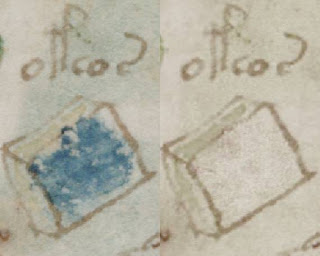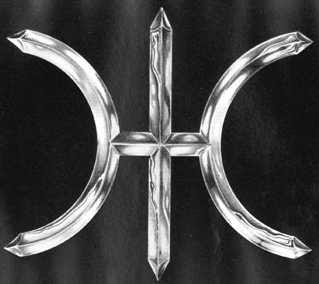Would having “Expert on the Voynich Manuscript” on your CV significantly raise your perceived intellectuality (i.e. an extra ten grand per year on your salary)? It would? Then read on, and I’ll reveal the secret two-stage process that They don’t want you to find out…
Stage One. You start out by pretending to be a Voynich expert. All you have to know is:
(a) That the two jargon terms for the Voynich Manuscript are “VMs” (because “Ms” or “MS” is short for “manuscript”) and “Beinecke MS 408” (because it’s 408th in the Beinecke Library’s collection of manuscripts);
(b) That the VMs lives at Yale University in New Haven (because that’s what the Beinecke Library is part of); and
(c) That the VMs is a mysterious old handwritten book that nobody can read. Not even me!
If you really want, you can also read the Wikipedia VMs page: but apart from the fact that the Voynich Manuscript was [re]discovered in Italy in 1912 by dodgy book dealer Wilfrid Voynich (hence its name), feel free to basically skip the rest.
Incidentally, if you’re ever asked about anyone who has written about the VMs (Newbold, Brumbaugh, Terence McKenna, anyone really), any real Voynich expert would nod sympathetically and say “Poor old X – if only they had known what we know now“. Of course, this is a big fat lie, because we still know basically sod all about the VMs.
Stage Two. You continue by actually becoming a Voynich expert. This is also easy, as long as you can get a working grasp of the following basic statements:-
- The VMs was probably made by a right-handed European between 1250 and 1640.
If post-1622, explain how Jacobus de Tepenecz’s signature got on the front
If post-1500, explain how 15th century quire numbers got on it
If pre-1450, explain how Leonardo-style hatching ended up in some of the drawings
- If the VMs is a language, note that its words don’t function like those in real languages
If the VMs is a cipher, note that it doesn’t work like any known cipher
If the VMs is nonsense, note that its letters appears to follow unknown rules
If the VMs’ plants are botanical, note that most don’t resemble real plants
Now all you have to do is to devise your very own really, really lame signature theory. As long as it amuses you and doesn’t trample on the above dull bullet-points too badly, congratulations – you’re right up there with the big hitters! But how should you construct this new theory?
Actually, it’s quite helpful here to project how you feel about your own work onto how you think the original author(s) felt about the VMs. For example, if you think that your own work is meaningless, vacuous nonsense written solely to convince your employers to pay your wages, then you might try devising your own variant of the basic hoax theory template (which argues that the VMs is meaningless, vacuous nonsense written by [insert name here] solely to convince Emperor Rudolf II to pay a rumoured 600 gold ducats).
But be bold in your theorising! Be creative! Perhaps think of some vaguely Renaissance figure you admire (though Leonardo’s already taken, and he was left-handed anyway, d’oh!) or just happen to remember, preferably someone whose name you can consistently spell correctly. Wafer-thin historical connections to herbal medicine, astrology, astronomy, ciphers and mystery are probably bonuses here. So, Nostradamus would be a good ‘un: Queen Elizabeth I not so good.
But remember, you’re not trying to prove your theory is correct here (for what kind of an idiot would attempt that with such scanty evidence, 500-ish years after the event?) Rather, you’re just staking your claim to the possibility that
no images were found
might have been the author. And the level of proof required to achieve that is, frankly, negligible.And hey, even if you choose the name with a pin and a biographical dictionary, if it eventually turns out that you are right, think how unbearably smug you’ll be. Possibly for decades!
Finally: however bad projecting your own life onto the VMs’ blank canvas may be as an historical approach (and believe me, it lies somewhere between ‘rubbish‘ and ‘pants‘), it is guaranteed to give you plenty of interestingly ironic things to say about the VMs when you’re asked about it at those hip higher-earner parties you’ll be attending. Oh, and at your book-launch too, naturally. 🙂



